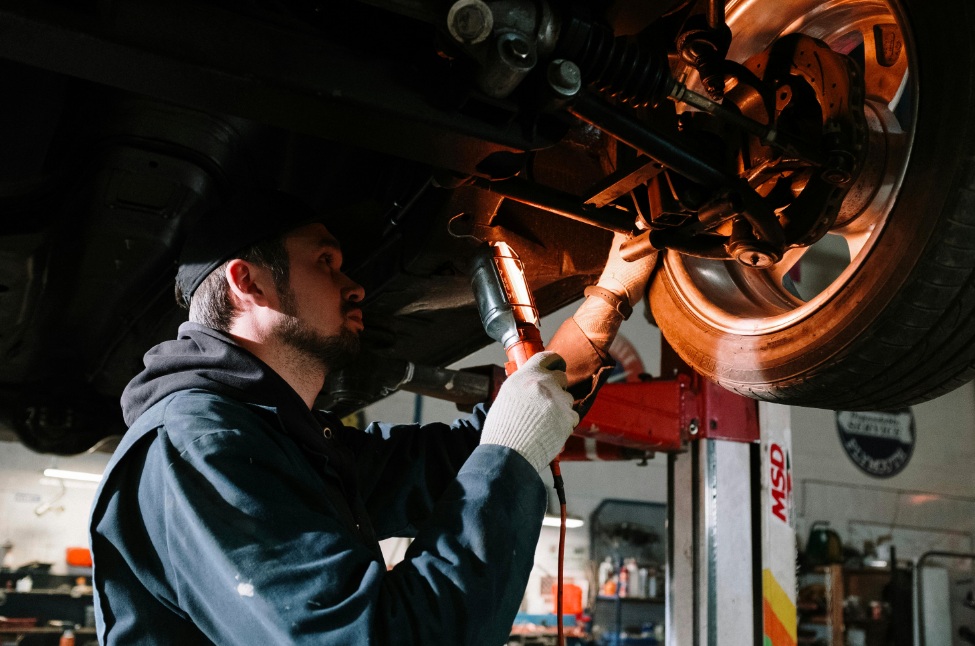Vehicle maintenance in 2025 is evolving fast as technology transforms every aspect of repair. Smarter tools, AI diagnostics, and sustainable practices now drive a shift from reactive fixes to proactive, efficient care.
Vehicle damage can result from many causes, especially hailstorms. Such damages need specialized care, particularly in cities like Denver, where hailstorms are frequent and severe. In May 2024, a severe hailstorm swept through the Denver metro area, causing $2 billion in damage across Colorado.
These frequent weather-related damages have increased the need for efficient repair methods. In such conditions, services like paintless dent repair in Denver offer a practical and cost-effective solution for restoring vehicles affected by hail or other impact damage. Paintless dent repair (PDR) is a technique that removes minor dents from a vehicle’s body without using paint or fillers.
Given these recurring challenges, understanding how modern repair technologies address real-world vehicle damage has become essential. This article aims to explore the smart methods transforming vehicle maintenance in 2025, highlighting practical innovations.
Predictive Maintenance Powered by Machine Learning
Predictive maintenance is redefining how vehicles are serviced in 2025. Instead of relying on scheduled checkups, smart systems now identify issues before breakdowns occur. This approach reduces costly downtime, extends vehicle lifespan, and ensures consistent performance. With the rise of advanced sensors and real-time data analytics, maintenance is becoming more precise and less wasteful than ever before.
Traditional maintenance practices depend heavily on mileage or manufacturer guidelines. These methods often result in servicing either too early or too late, leading to inefficiency. Machine learning has bridged this gap by analyzing complex datasets that reveal early signs of wear. Through predictive algorithms, service centers can now anticipate problems and take corrective action exactly when needed.
According to a 2025 study published in MDPI, researchers used machine learning models on data from 50,000 vehicles to predict maintenance needs accurately. They resolved data imbalance using SMOTE, expanding the dataset to 80,000 samples.
Among several algorithms tested including Random Forest, Gradient Boosting, and KNN, the Decision Tree model achieved an impressive 99.97% accuracy. These results demonstrate that predictive analytics can reduce maintenance expenses while improving vehicle uptime.
Paintless Dent Repair as Cost-Effective Restoration
Paintless Dent Repair (PDR) has become an essential part of modern vehicle care, allowing technicians to fix body panels without the need for paint or fillers. The process involves reshaping damaged metal from behind the surface, maintaining the original factory finish. This approach reduces material waste, shortens repair time, and helps preserve the vehicle’s resale value.
Mile High Dents recommends choosing the right service provider to ensure quality results. Experienced professionals prioritize precision over volume, complete insurance coordination, and convenience options like pickup and delivery for customers. Their insights also highlight how both fleet and individual vehicle owners benefit from consistent repair standards and transparent processes.
Recent research supports the rising global demand for professional PDR solutions. A 2024 study by Dataintelo Consulting estimated the global PDR market at around $4.1 billion, with projected growth of 6.7% annually through 2033. By the end of that period, the market is expected to reach $7.4 billion. These promising figures demonstrate a sustained interest in efficient, eco-friendly vehicle restoration methods worldwide.
Eco-Friendly Innovations in Modern Vehicle Maintenance
Sustainability is now at the core of vehicle care in 2025. Repair techniques and materials are advancing to minimize waste and cut carbon emissions. From using biodegradable cleaners to incorporating recyclable components, each step in the process now emphasizes environmental sustainability. Drivers today value services that protect both their vehicles and the planet.
Modern workshops increasingly adopt digital documentation, energy-efficient lighting, and precision tools that reduce material overuse. These small but significant shifts improve workshop efficiency while ensuring compliance with green industry standards.
According to a study by PW Consulting, rising environmental awareness is reshaping the automotive repair industry. Many repair shops are now adopting greener practices, including the use of eco-friendly materials, component recycling, and improved energy efficiency.
Companies that prioritize sustainability appeal more to eco-conscious customers and strengthen their position in the market. Studies also reveal that nearly 70% of consumers favor businesses that consistently demonstrate a genuine commitment to green practices. This highlights how environmental responsibility strongly influences modern customer choices.
Digital Twins, AR Guides, and Remote Diagnostics
Digital twin technology is reshaping how vehicles are maintained in 2025. A digital twin is a virtual representation that replicates a vehicle’s real-time condition and performance. It enables technicians to analyze component behavior, simulate operations, and detect potential issues in advance. This predictive approach improves maintenance planning and helps prevent unexpected mechanical failures.
Augmented Reality (AR) guides are another major advancement improving repair accuracy and technician training. AR-enabled glasses and applications overlay step-by-step repair instructions on physical components. Technicians can visualize internal parts, detect hidden issues, and apply the right amount of pressure or heat where needed. This not only reduces guesswork but also speeds up complex repair procedures.
Remote diagnostics have further transformed how vehicle maintenance is performed. With cloud connectivity, vehicles can now communicate directly with service centers. Fault codes, performance metrics, and sensor data are transmitted instantly for analysis. Technicians can then suggest repairs or software updates without requiring a workshop visit. This remote capability minimizes downtime, enhances customer convenience, and represents a major leap toward proactive, connected vehicle care.
FAQs
1. How is artificial intelligence improving customer experience in vehicle maintenance?
AI-driven systems now offer instant updates, automated scheduling, and digital tracking for repair and maintenance services. Customers receive instant cost estimates and maintenance reminders based on driving behavior. This transparency builds trust and reduces uncertainty, creating smoother communication between workshops and clients while improving satisfaction and loyalty across the service experience.
2. Can smart maintenance systems reduce environmental waste in repair shops?
Yes. Smart maintenance systems utilize accurate diagnostics to prevent needless part replacements and avoid excessive fluid changes. Digital records reduce paper waste, and automated inventory tools prevent overstocking. Combined with eco-friendly materials, these systems make vehicle servicing more efficient while significantly lowering environmental footprints across workshops and service networks.
3. What role will connected vehicles play in the future of maintenance?
Connected vehicles continuously send performance data to manufacturers and service centers. This information helps predict component wear, optimize software updates, and improve design for future models. In 2025, connected systems are expected to become central to preventive care, enabling faster, data-driven repairs and smarter long-term maintenance planning.
Vehicle maintenance in 2025 blends technology and practicality. Predictive systems, EV infrastructure, PDR methods, and digital tools redefine repair work. Owners pay less for damage control and more for prevention. Shops optimize resource use, and customer satisfaction improves. The future of maintenance hinges on innovation grounded in recent studies and real-world demand.

